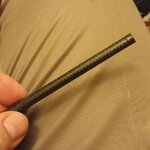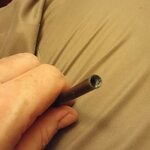I have a crazy idea of making a carbon fiber slim line. I want this to be a true slim line aka slim, not fat. There is very little meat once you turn down to the bushings and afraid I'll start to cut into the CF.
So here is my crazy thought, skip the brass tube. Problem is what to use for a mandrel and how to release the CF tube when set?
I've read a few docs on how to it but I can't just use a regular 7mm mandrel since I need some sort of barrier between the CF and the mandrel and this extra plastic will add extra interior diameter.
So here is my crazy thought, skip the brass tube. Problem is what to use for a mandrel and how to release the CF tube when set?
I've read a few docs on how to it but I can't just use a regular 7mm mandrel since I need some sort of barrier between the CF and the mandrel and this extra plastic will add extra interior diameter.
Last edited:


